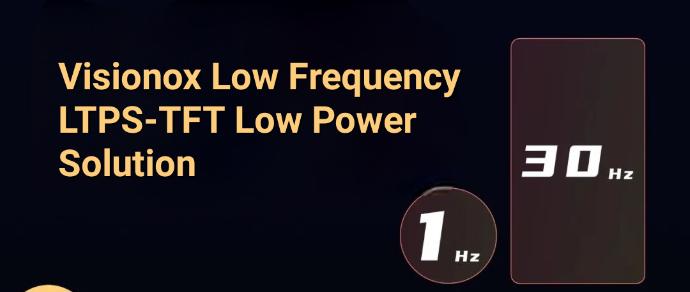Some of the latest mobile devices with AMOLED screens out there are rated to achieve improved battery life thanks to the new ability to drop their refresh rates as low as 1 hertz (Hz) on the fly - when switching to always-on display (AoD) mode, for example. Unfortunately, this spec is typically associated with the latest and most expensive new smartphones out there, the Samsung Galaxy S22 Ultra included.

This is because their new 1-120Hz spec tends to require LTPO 2.0, a cutting-edge display component that allows for this "smart" or "adaptive" refresh rate feature. Those without it might only do as well as about 8-120Hz by comparison.
However, Visionox, a maker of displays for products including the Huawei P50 Pocket and Vivo Watch 2, claims to have solved that problem to some extent with its latest innovation. It is based on LTPS, an alternative layer that may already have become viewed as last-gen by some in the industry by now.
However, Visionox claims that its latest take on this material - LTPS-TFT - can support the 1Hz mode necessary for ultra-low-power AoD modes. Then again, it can apparently do so in wearables only - although it can support drops to as low as 30Hz if applied to smartphones at present.
These specs are now touted to result in energy savings of up to 25% in the former category, or 10% in the latter, when their new minimum-refresh-rate settings are in effect. Therefore, "LTPS-TFT" just might become the buzzword of choice for OEMs looking to make their next-gen smartwatches or other mobile devices in the near future.









